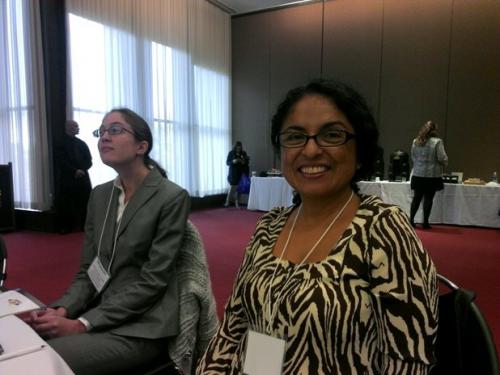ImmigrationEducating children in Guatemala before they decide to migrate to the U.S. border
Insecurity is a primary factor pushing thousands of young Central Americans to leave their homes and travel north. In fiscal year 2016, nearly 60,000 youth from Central America and Mexico crossed the U.S. border without a parent or guardian. During the peak of the crisis in 2014, more than 68,000 made the perilous trek. The vast majority of these minors are arriving from what are called Northern Triangle countries in Central America: Guatemala, Honduras and El Salvador. U.S. foreign policy in Central America has focused on funding a militarized war on drugs, which in turn has fueled the root causes that push people to migrate. But some efforts have been made to identify and address these root causes. In 2014, the U.S. government committed $9.6 million in emergency funding to El Salvador, Guatemala and Honduras to assist migrants returned from the U.S. USAID launched a five-year, $40 million program to improve security in Guatemala. Programs that strengthen the regional socioeconomic fabric of affected communities stand as alternatives to anti-drug operations. These programs could establish conditions for children and youth to stay in their countries of origin and live more productive and healthy lives.

Dr. Carmen Monico at Latino social work conference // Source: elon.edu
On 8 March, forty girls were killed in a fire at a home for abused youth in Guatemala. More than 800 children and adolescents were living in the home.
In Guatemala, youth are at high risk of becoming victims and perpetrators of crime and violence. This insecurity is a primary factor pushing thousands of young Central Americans to leave their homes and travel north. In fiscal year 2016, nearly 60,000 youth from Central America and Mexico crossed the U.S. border without a parent or guardian. During the peak of the crisis in 2014, more than 68,000 made the perilous trek.
The vast majority of these minors are arriving from what are called Northern Triangle countries in Central America: Guatemala, Honduras and El Salvador. More recently, an increased number are coming from Guatemala. Since 9/11, U.S. policy has primarily focused on securing the southern border. For even longer, U.S. foreign policy in Central America has focused on funding a militarized war on drugs, which in turn has fueled the root causes that push people to migrate.
But some efforts have been made to identify and address these root causes.
Since the summer of 2015, I have been assessing a small pilot educational program that targets some of the issues that eventually lead to youth migration. Who benefited from the pilot and how? What could this case study teach us about how to direct future humanitarian aid to Central America? These were questions I set out to answer.
Root causes of uprooted childhoods
Civil wars in El Salvador, Nicaragua and Guatemala may have ended in the 1990s, but the violence has taken new forms. Since the wars, organized crime and corruption within Northern Triangle countries have become widespread. They are key factors that “push” migrants to move out.
Meanwhile, there has been little economic development in the region, and there are limited educational opportunities for youth. These factors create the allure of opportunity in the north that “pulls” young people to migrate far from home.
